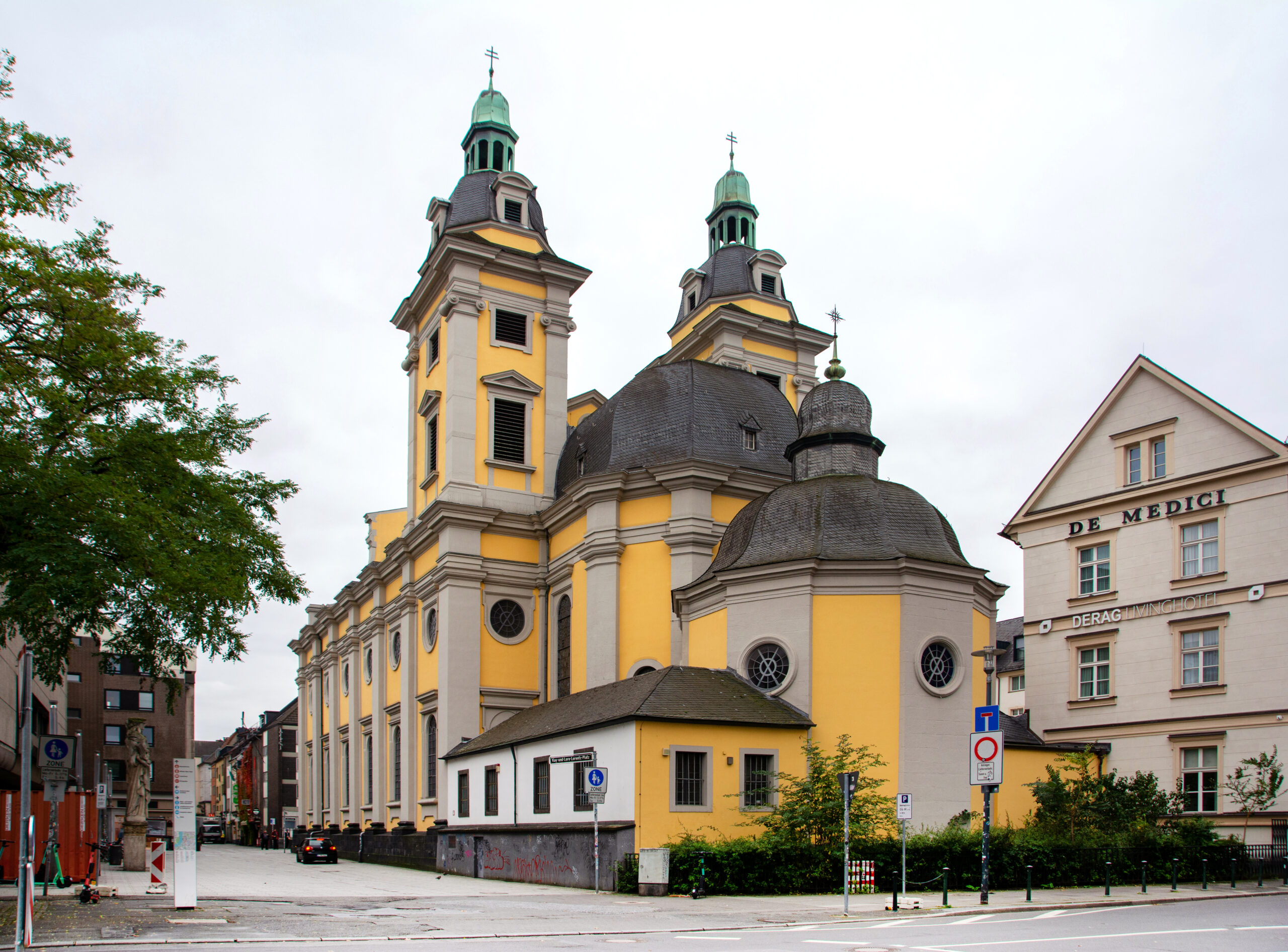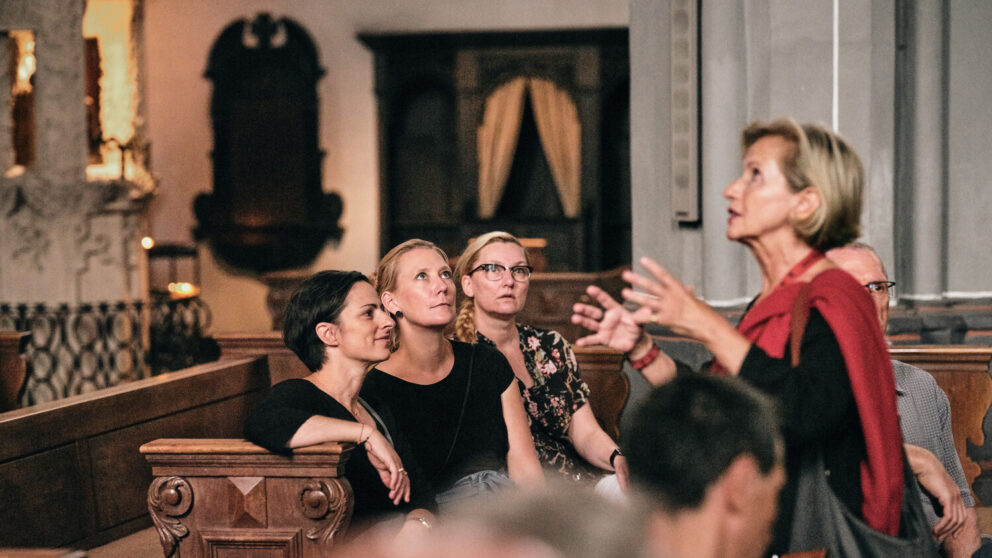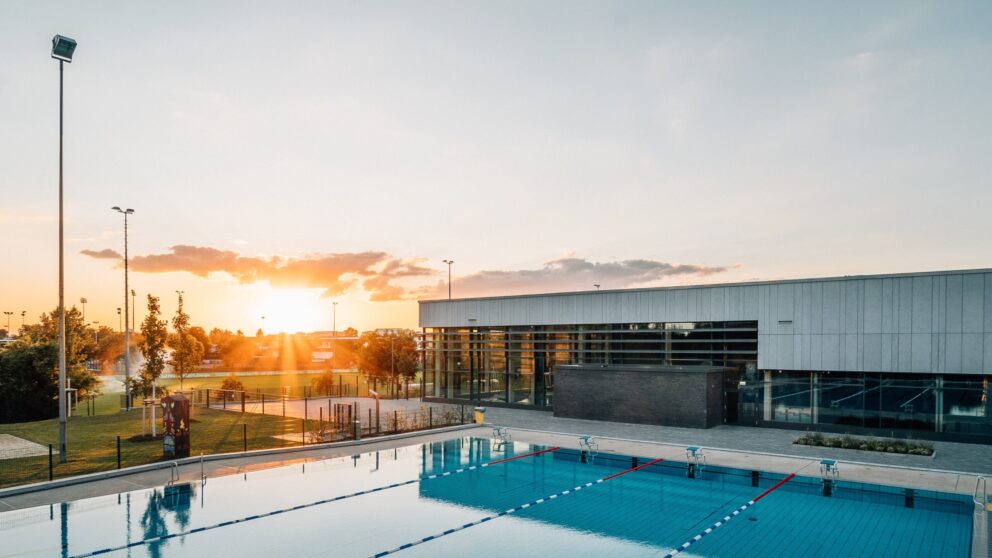
Six extraordinary churches in Düsseldorf
Six extraordinary churches in Düsseldorf
Silent night times completely differently
Do you also have the firm resolution to really enjoy the pre-Christmas period this year, without any stress? Then we have the perfect program for you: a tour of Düsseldorf's most beautiful and spectacular churches. Meditative tranquility, impressive architecture, art-historical treasures, particularly atmospheric events: These six churches will make Advent unforgettable. Speaking of which, did you know that Düsseldorf hosts the IDO, the International Düsseldorf Organ Festival, every year? It's a wonderful opportunity to get to know a church or two that you've never seen before.
Basilica of St. Lambert
Church and fair? How does that fit together? In Düsseldorf, well, of course. The parish altar of the Catholic St. Lambertus Church holds the relics of the city's patron saint, St. Apollinaris. And his memorial day is the original occasion of the Düsseldorf Kirmes - which, as is well known, is sacred to the party-loving Düsseldorfers. But there is another rather unorthodox reason for visiting the imposing three-nave hall basilica: after a fire in 1815, the church tower had to be renewed. A short time later, the wood warped and created the famous twist in the roof. According to popular belief, it will only straighten out again when a virgin gets married in the Lambertus church. This event is obviously a long time coming, and so far everything is still crooked. A tip for art lovers: The west portal from the 1950s is the work of the sculptor and Beuys teacher Ewald Mataré.
Church of St. Andrew
Outside, life in the old town is raging; inside, reverent silence reigns. Nowhere else in Düsseldorf can you experience the proverbial joie de vivre and the cultural-historical treasures of the city in such close proximity. The Catholic Church of St. Andrew is considered a masterpiece of the late German Renaissance and early Baroque. Be captivated by the magnificent interior of the former court and Jesuit church, the ornate stucco, the impressive frescoes and the 17th century pulpit carved from wood. And please don't forget to pay a visit to Jan Wellem, whose mausoleum is located on the north side. The famous elector shaped Düsseldorf like no other and transformed the city into one of the cultural centers of Europe in his time.
Berger church
Old church, new art. With geometrically patterned, colorfully graduated wall hangings and a white acrylic glass altar, the well-known Frankfurt artist Tobias Rehberger has given the small hall church a spectacular interior. Rehberger's light and color installations create a changing mood in the bright, unpretentious house of worship, which some consider an insider's tip. After all, the Berger church is somewhat hidden in an old town backyard. The reason? It was the city's first Lutheran church, and in 1687, the year of its consecration, Lutherans were merely tolerated in the recatholicized Düsseldorf. At that time, they were only allowed to build their new buildings in the courtyards. Today, the Berger Church is not only an oasis of peace, but also a pilgrimage site for friends of contemporary art. A nice contrast: After going to church, you can enjoy an Alt beer in the hustle and bustle of the Uerige brewery, which is just a few steps away from the church.
St. John's Church
The liberation! St. John's Church on Martin Luther Square is Düsseldorf's largest Lutheran place of worship and the first to be allowed to be erected freely on a square. So the time of the hidden Lutheran court churches was finally passé in 1881. Even today, the imposing red brick building in round arch style stands for future orientation. Since 1995, St. John's Church has been a Protestant meeting place, and since then culture, faith, and diaconal and social offerings have formed a convincing unity here. A diverse program is offered under the heading 'Church in the City'. From 10-minute devotions to electro concerts. Our tip: The Lunch Time organ invites you to enjoy half an hour of organ music every Wednesday from 12:30 pm. For lunch afterwards, we recommend Wilma Wunder, whose restaurant is located in the new Gastro-Pavillon on Martin-Luther-Platz.
Basilica of St. Margaret
A journey through time in terms of art and cultural history: As early as the 9th century, the Frankish knight Gerricus, who gave his name to the district of Gerresheim, founded a monastery at the present site of St. Margaret's Church. But the nobleman is said to have run out of money while building the church, so according to legend the devil himself offered support. Gerricus hesitated, and so both decided on a bet jumping from the tower. The devil lost, the building was completed and consecrated in 1236. In today's pier basilica of St. Margaret, even ordinary mortals can immerse themselves in the richness of form and color of the Rhenish late Romanesque period. The 'Gerresheimer Gnadenstuhl' in the vault center, a representation of the Trinity, is considered the earliest in German monumental painting. Still from its 10th-century predecessor is the larger-than-life Ottonian cross behind the altar. The day is made perfect with a stroll through the quaint town center of Gerresheim and a subsequent onion tart at Mr. Knillmann's at the Alter Markt. Hiking enthusiasts start from here into the hilly forests of the surrounding area, for example into the Rotthäuser Bachtal.
Bunker Church of St. Sacrament
As sure as the Amen in the church. In the Heerdt high bunker, not only the faith is rock solid, but also the building itself is indestructible. Under the peace motto 'Swords to plowshares and lances to pruning knives' taken from Isaiah, the unique war witness made of brutalist concrete became a symbol of peace and community through its conversion. In 1949, the meeting place of the parish of St. Sacrament received its consecration, and since 2016, the bunker church has been used as a Coptic place of worship, as well as for events and exhibitions. Especially from the outside, the church, today a listed memorial and art venue in one, is spectacular. It is best photographed at night, when the parking lot is empty and the illuminated bell tower rises into the dark sky.
Title image: Düsseldorf Tourism




